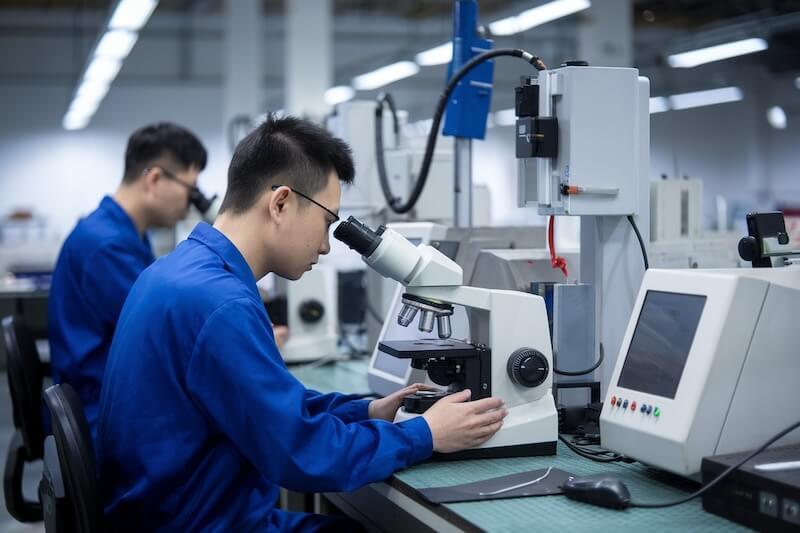Introduction
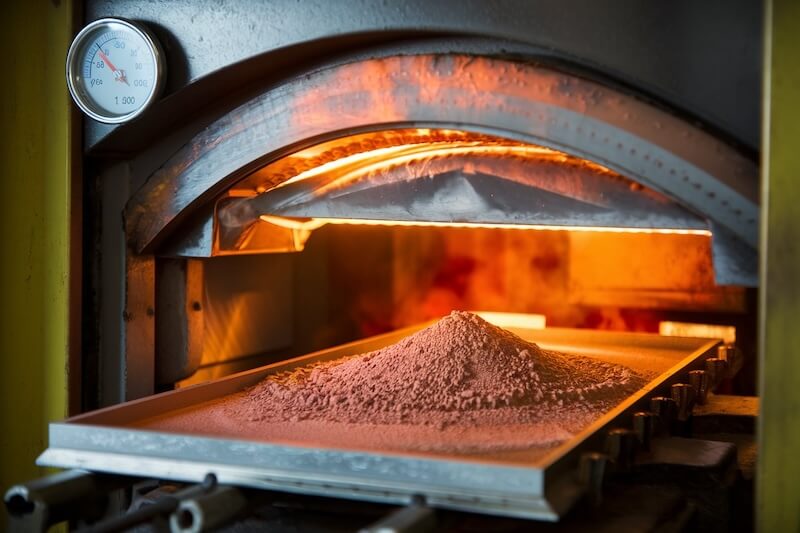
Tungsten carbide is a versatile material known for its hardness, wear resistance, and high melting point. These properties make it an essential material in many industries, from mining to aerospace. However, the production of tungsten carbide involves several key processes that influence the material’s final properties. One of the most critical stages in the production of tungsten carbide components is sintering, which is the process of heating the material to a specific temperature to bond its particles together. Sintering temperature plays a fundamental role in determining the final properties of tungsten carbide, including its density, hardness, and toughness. This article will explain the concept of sintering temperature in the tungsten carbide industry, its significance, and how it affects the performance of tungsten carbide products.
What is Sintering Temperature?
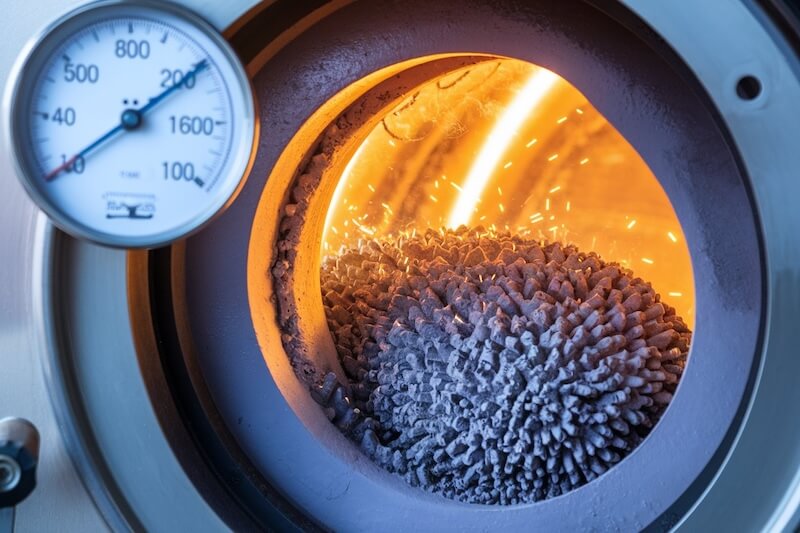
Sintering is a process used in powder metallurgy, where fine particles of a material are heated to a temperature below their melting point, causing them to fuse and form a solid piece. The sintering temperature is the specific temperature at which this fusion occurs, and it is crucial for ensuring the proper bonding of the tungsten carbide particles.
In the case of tungsten carbide, sintering typically involves heating a mixture of tungsten carbide powder (WC) and a binder material, such as cobalt (Co) or nickel (Ni), in a furnace. The process is carried out in a controlled atmosphere, often with the presence of hydrogen or vacuum, to prevent oxidation of the material.
The sintering temperature must be carefully controlled to ensure that the tungsten carbide powder forms a dense and durable material without losing its desirable properties. If the sintering temperature is too low, the particles may not bond properly, resulting in a material that is porous and weak. Conversely, if the temperature is too high, the material may undergo excessive grain growth, reducing its hardness and strength.
Why is Sintering Temperature Important?
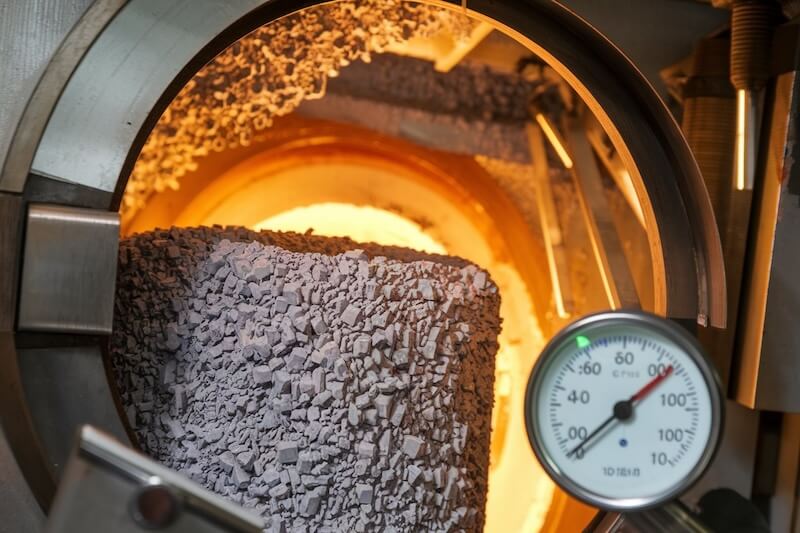
The sintering temperature is a critical factor that directly impacts several key properties of tungsten carbide. These include:
Density
The density of the final tungsten carbide product is closely tied to the sintering temperature. At the appropriate sintering temperature, the particles of tungsten carbide bond together, filling any voids and reducing porosity. This results in a dense, compact material with higher strength and durability. Achieving the right density is crucial for ensuring the performance of tungsten carbide components, especially in demanding applications like cutting tools or wear parts, where high density contributes to superior wear resistance and toughness.
Hardness
Sintering temperature also affects the hardness of tungsten carbide. Hardness is one of the most important properties of tungsten carbide, as it determines the material’s ability to resist wear and deformation. If the sintering temperature is too low, the particles may not fuse properly, leading to a softer material. On the other hand, sintering at too high a temperature can cause grain growth, which reduces the hardness of the material. Achieving the optimal sintering temperature is essential to producing tungsten carbide with the desired hardness, which is typically above 9 on the Mohs scale.
Toughness and Strength
While hardness is crucial, toughness and strength are also important properties of tungsten carbide. Sintering temperature influences the bonding between the tungsten carbide grains and the binder material (typically cobalt or nickel). At the correct sintering temperature, the material will have an optimal balance of hardness and toughness. However, if the sintering temperature is too high, excessive grain growth can occur, reducing the material’s toughness and making it more prone to cracking or breaking under stress.
Grain Structure
The grain structure of tungsten carbide is another critical factor influenced by the sintering temperature. The microstructure of tungsten carbide can vary significantly depending on the sintering temperature, which in turn affects the material’s mechanical properties. For example, sintering at a lower temperature can result in finer grains, which enhance hardness, but may reduce toughness. Higher sintering temperatures tend to produce coarser grains, which improve toughness but reduce hardness. Controlling the sintering temperature allows manufacturers to tailor the material’s properties to meet specific performance requirements.
Factors Influencing Sintering Temperature
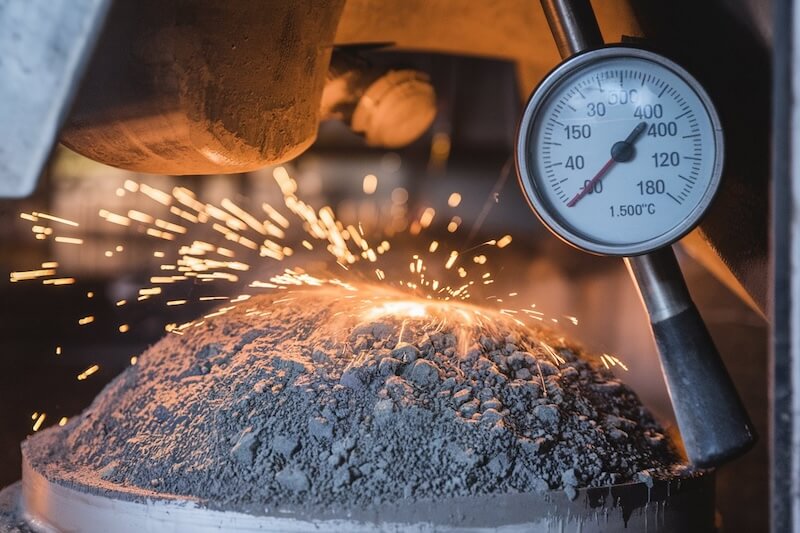
Several factors influence the selection of sintering temperature in the tungsten carbide industry:
Type of Binder Material
The choice of binder material, such as cobalt or nickel, plays a significant role in determining the sintering temperature. Different binder materials have different melting points, and the sintering temperature must be adjusted accordingly to ensure the binder fully melts and bonds with the tungsten carbide particles without causing excessive grain growth.
Particle Size of Tungsten Carbide Powder
The particle size of the tungsten carbide powder also affects the sintering process. Finer powders generally require lower sintering temperatures, as they bond more easily at lower temperatures. Coarser powders, on the other hand, may require higher sintering temperatures to achieve adequate particle fusion. The particle size distribution must be carefully controlled to optimize the sintering temperature and ensure uniform bonding.
Sintering Atmosphere
The atmosphere in which the sintering process takes place is another important factor. Tungsten carbide is typically sintered in a vacuum or hydrogen atmosphere to prevent oxidation. The presence of oxygen can lead to the formation of tungsten oxide, which weakens the material. The sintering atmosphere must be carefully controlled to prevent contamination and ensure optimal bonding of the tungsten carbide particles.
Sintering Time
In addition to temperature, the duration of the sintering process is also important. While higher sintering temperatures typically result in faster bonding, prolonged exposure to high temperatures can cause grain growth and reduce the material’s hardness. Finding the right balance between sintering temperature and time is crucial for achieving the desired properties in the final tungsten carbide product.
Typical Sintering Temperatures for Tungsten Carbide
The sintering temperature for tungsten carbide typically ranges from 1,400°C to 1,600°C (2,550°F to 2,912°F). The exact temperature depends on the type of binder material used and the specific requirements for the material’s properties.
Cobalt-bonded tungsten carbide is typically sintered at around 1,450°C to 1,500°C. Cobalt has a relatively low melting point (1,495°C), so the sintering temperature must be carefully controlled to avoid excessive grain growth and ensure proper bonding.
Nickel-bonded tungsten carbide can be sintered at slightly higher temperatures, around 1,550°C to 1,600°C, since nickel has a higher melting point (1,455°C) and can withstand higher sintering temperatures without losing its properties.
Impact of Sintering Temperature on Applications
The sintering temperature plays a direct role in determining the suitability of tungsten carbide for different applications. For instance, components that require high wear resistance, such as cutting tools and mining equipment, demand a sintering temperature that ensures high density and hardness. On the other hand, parts that need to withstand high impacts or abrasive conditions may benefit from a sintering temperature that provides a balance of hardness and toughness.
Conclusion
Sintering temperature is a crucial parameter in the manufacturing of tungsten carbide materials. It directly impacts the material’s density, hardness, toughness, grain structure, and overall performance. A thorough understanding of the sintering process and the factors influencing sintering temperature is essential for producing high-quality tungsten carbide products tailored to specific industrial applications. By carefully controlling the sintering temperature, manufacturers can optimize the properties of tungsten carbide, ensuring the material meets the demanding requirements of industries such as mining, manufacturing, and aerospace.

